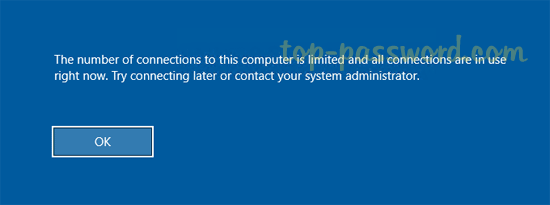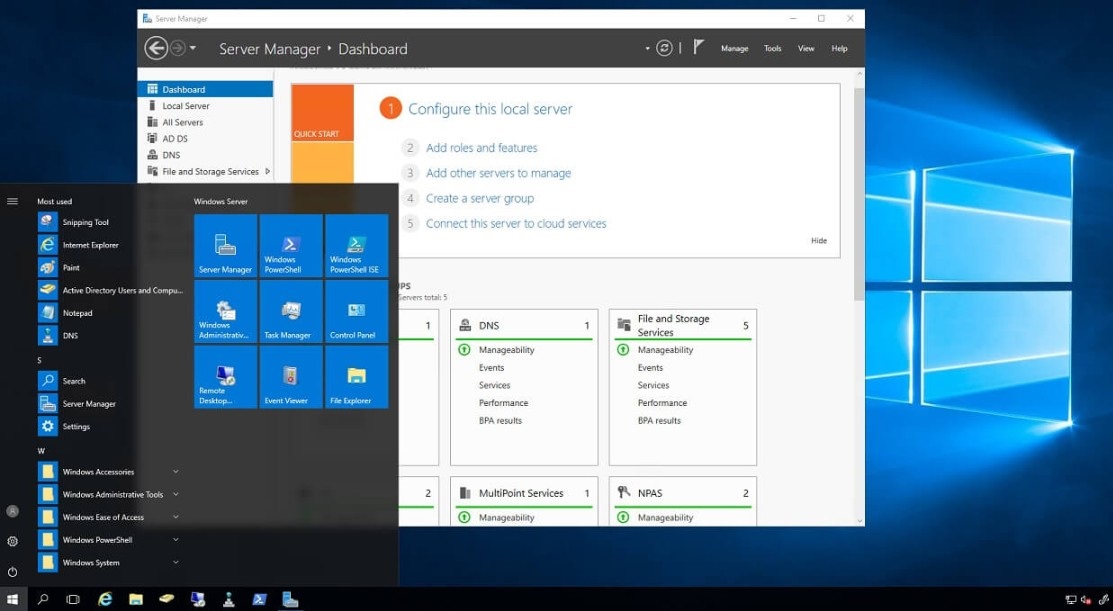Applies to: Windows 10, Windows 8.1, Windows Server 2019, Windows Server 2016, Windows Server 2012 R2
Buy your Windows Remote Desktop VPS now. RDP (Remote Desktop Protocol) is a tool developed by Microsoft, which uses a graphical interface connection between a remote Windows server on the internet or a local network. This server uses the Windows operating system.
You can use Remote Desktop to connect to and control your PC from a remote device by using a Microsoft Remote Desktop client (available for Windows, iOS, macOS and Android). When you allow remote connections to your PC, you can use another device to connect to your PC and have access to all of your apps, files, and network resources as if you were sitting at your desk.
Microsoft Windows 2008 Server; Microsoft Windows 7 and later; Linux with the RDesktop application installed; Mac OS X with a Remote Desktop client: (Mac OS X versions 10.9 and later: Microsoft Remote Desktop) (Mac OS X versions 10.5-10.8 only: Open Source CoRD Client) (Mac OS X versions prior to 10.7: Microsoft Remote Desktop Connection Client. Windows 10 can be configured to access your computer using Remote Desktop from a number of different devices. Allowing Remote Desktop sessions to your computer from your remote devices gives you access to files and resources from anywhere you are when away from home or the office.
This Itechguide teaches you how to setup remote desktop on Windows 10. The guide covers steps for 2 methods to setup RDP on Windows 10. Expand “Browse Post Topics” below to go straight to a topic. Windows 10: On the taskbar, click the search box and type Remote Desktop Connection. Select the Remote Desktop Connection app. In the Remote Desktop Connection window, click Options (Windows 7) or Show options (Windows 8, Windows 10). Type the IP address of your server. In the User name field, enter the user name. Optional: To save the access.
Note
You can use Remote Desktop to connect to Windows 10 Pro and Enterprise, Windows 8.1 and 8 Enterprise and Pro, Windows 7 Professional, Enterprise, and Ultimate, and Windows Server versions newer than Windows Server 2008. You can't connect to computers running a Home edition (like Windows 10 Home).
To connect to a remote PC, that computer must be turned on, it must have a network connection, Remote Desktop must be enabled, you must have network access to the remote computer (this could be through the Internet), and you must have permission to connect. For permission to connect, you must be on the list of users. Before you start a connection, it's a good idea to look up the name of the computer you're connecting to and to make sure Remote Desktop connections are allowed through its firewall.
How to enable Remote Desktop
The simplest way to allow access to your PC from a remote device is using the Remote Desktop options under Settings. Since this functionality was added in the Windows 10 Fall Creators update (1709), a separate downloadable app is also available that provides similar functionality for earlier versions of Windows. You can also use the legacy way of enabling Remote Desktop, however this method provides less functionality and validation.
Windows 10 Fall Creator Update (1709) or later
You can configure your PC for remote access with a few easy steps.

- On the device you want to connect to, select Start and then click the Settings icon on the left.
- Select the System group followed by the Remote Desktop item.
- Use the slider to enable Remote Desktop.
- It is also recommended to keep the PC awake and discoverable to facilitate connections. Click Show settings to enable.
- As needed, add users who can connect remotely by clicking Select users that can remotely access this PC.
- Members of the Administrators group automatically have access.
- Make note of the name of this PC under How to connect to this PC. You'll need this to configure the clients.
Windows 7 and early version of Windows 10
To configure your PC for remote access, download and run the Microsoft Remote Desktop Assistant. This assistant updates your system settings to enable remote access, ensures your computer is awake for connections, and checks that your firewall allows Remote Desktop connections.
All versions of Windows (Legacy method)
To enable Remote Desktop using the legacy system properties, follow the instructions to Connect to another computer using Remote Desktop Connection.
Should I enable Remote Desktop?
If you only want to access your PC when you are physically using it, you don't need to enable Remote Desktop. Enabling Remote Desktop opens a port on your PC that is visible to your local network. You should only enable Remote Desktop in trusted networks, such as your home. You also don't want to enable Remote Desktop on any PC where access is tightly controlled.
Be aware that when you enable access to Remote Desktop, you are granting anyone in the Administrators group, as well as any additional users you select, the ability to remotely access their accounts on the computer.
You should ensure that every account that has access to your PC is configured with a strong password.
Why allow connections only with Network Level Authentication?
If you want to restrict who can access your PC, choose to allow access only with Network Level Authentication (NLA). When you enable this option, users have to authenticate themselves to the network before they can connect to your PC. Allowing connections only from computers running Remote Desktop with NLA is a more secure authentication method that can help protect your computer from malicious users and software. To learn more about NLA and Remote Desktop, check out Configure NLA for RDS Connections.

If you're remotely connecting to a PC on your home network from outside of that network, don't select this option.
Setup Remote Desktop Windows 10

For Dedicated Servers, Virtual Servers and Dynamic Cloud Servers with Windows operating system
Download Remote Desktop Windows 10
This article explains how to establish a Remote Desktop Connection (RDP) to your server. The Remote Desktop Connection is preinstalled on all Windows systems and gives you direct access to the desktop interface of your server. Please proceed as follows:
Prerequisite
You have noted down the IP address of your server with which you want to establish a connection.
Open the Remote Desktop Connection.
Windows 7: Start > All Programs > Accessories > Remote Desktop Connection
Windows 8: On the Home screen, type Remote Desktop Connection, and then click Remote Desktop Connection in the list of results.
Windows 10: On the taskbar, click the search box and type Remote Desktop Connection. Select the Remote Desktop Connection app.
In the Remote Desktop Connection window, click Options (Windows 7) or Show options (Windows 8, Windows 10).
Type the IP address of your server.
In the User name field, enter the user name.
Optional: To save the access data, select the Allow saving data check box.
Click Connect.
The Windows Security window will open.Enter the password and click OK.
If this is the first time you connect to the desired server, or if you do not save the connection data, you must confirm the connection with Yes.
Please Note
On your server, a session is created for each connection. The license allows a maximum of two connections to be established simultaneously. To end a session, you must log out of your server. If the remote desktop window is closed, the session and all programs running in it will be saved.
